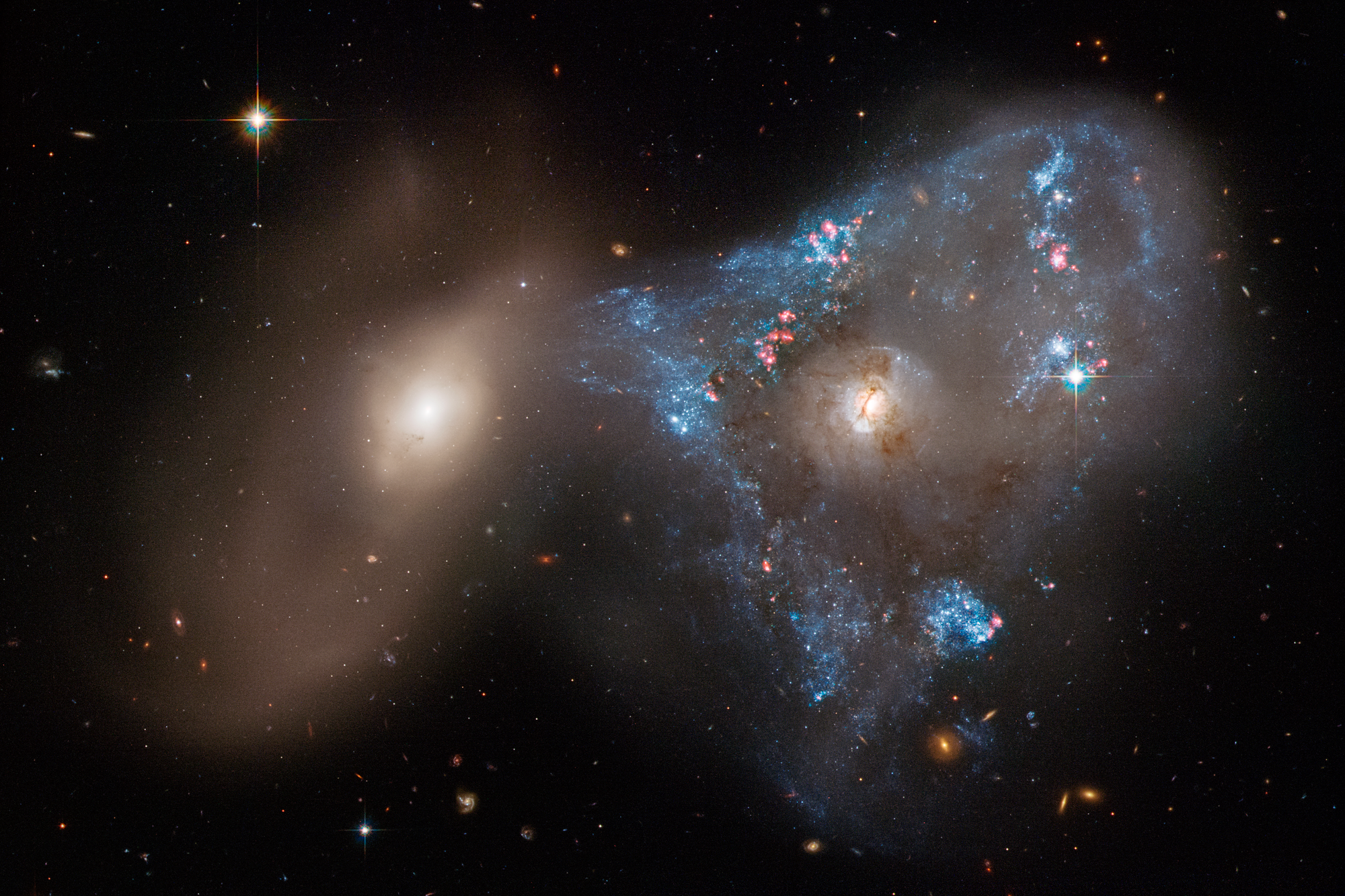Hubble telescope returns image of luminous celestial triangle
The Hubble telescope revealed a stunning triangle of blue gas glittering with newborn stars after two galaxies passed through one another millions of years ago.

While astronomers eagerly await the first science operations of the newly launched James Webb Space Telescope, the venerable Hubble Space Telescope just demonstrated that it’s not quite ready to head to pasture just yet.
On Tuesday Nasa revealed a stunning new image from Hubble, a luminous, blue, celestial triangle of stars and gas clouds around 191 million light years away.
Looking closer at the image, you can see that the strikingly angular blue triangle centers the smaller of two softly glowing golden-amber clouds, a clue to what Hubble has captured.
“A spectacular head-on collision between two galaxies,” is how the space agency explained the image in an accompanying blog post. “The pair contains the glittery, distorted, star-forming spiral galaxy NGC 2445 at right, along with its less flashy companion, NGC 2444 at left.”
Astronomers believe the more colorful NGC 2445 passed through NGC 2444 compressing clouds of stellar gas in the former and triggering the birth of many new stars, the gems glittering in the stellar triangle. The galaxy on the left, NGC 2444, survived the collision without acquiring its own array of new stars because it is much older than NGC 2445 and lacked the reserve of stellar hydrogen to form stars during the collision.
Astronomers believe galactic collisions are a common driver of star birth, though such colossal interactions typically generate rings of stars, rather than triangles, a pattern also seen in the Hubble’s image of the Cartwheel galaxy.
“What’s weird about this system is that it’s a triangle of star formation. Part of the reason for that shape is that these galaxies are still so close to each other and NGC 2444 is still holding on to the other galaxy gravitationally,” University of Washington astronomer Julianne Dalcanton is quoted as having said in the blog post. “They’re not completely free of each other yet, and their unusual interaction is distorting the ring into this triangle.”
Scientists are still learning how galactic collisions and mergers can influence galaxies and their star systems, actions that take place over millions of years. For instance, recent findings have found that passing through larger galaxies could strip some small galaxies of their dark matter, mostly invisible material thought to be essential for galaxy formation.
“This is a nearby example of the kinds of interactions that happened long ago,” Elena Sabbi, a scientist with the Space Telescope Science Institute in Baltimore, is quoted as having said in the blog.
Subscribe to Independent Premium to bookmark this article
Want to bookmark your favourite articles and stories to read or reference later? Start your Independent Premium subscription today.

Join our commenting forum
Join thought-provoking conversations, follow other Independent readers and see their replies